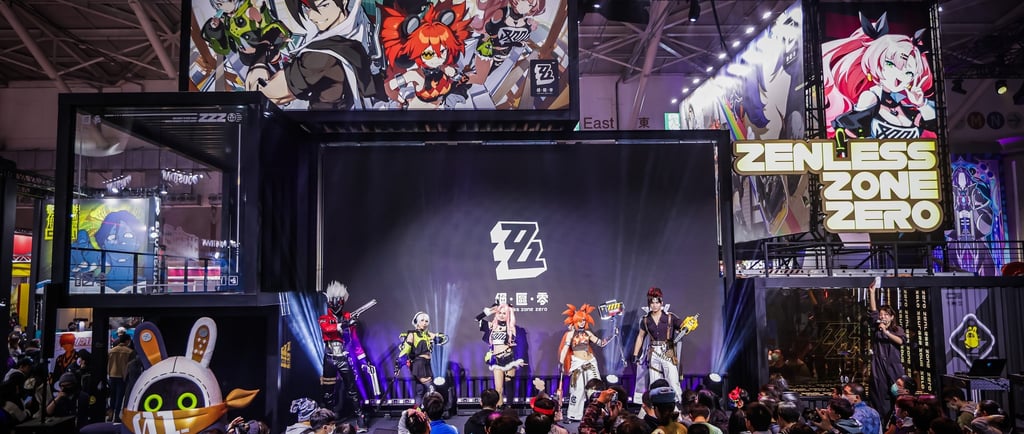The Future of Gacha Games: Cultural Trends and Player Base Evolution
5 min read


The Rise of Gacha Games: A Cultural Phenomenon
Gacha games, originating from Japan, have swiftly evolved from niche mobile applications to a central element of modern gaming culture. The term "gacha" refers to toy vending machines prevalent in Japan, which offer a random assortment of figures and toys similar to the mechanics employed in gacha gaming. Initially developed in the early 2010s, these games have capitalized on the allure of chance and reward, capturing the imaginations of millions both domestically and internationally.
The rapid proliferation of gacha games can be attributed to several factors, including advancements in mobile technology and the widespread adoption of smartphones. Titles such as "Fate/Grand Order" and "Genshin Impact" have redefined player engagement through captivating storytelling and visually stunning anime-inspired aesthetics. As players navigate through these games, they form emotional connections with characters and narratives, which is a hallmark of gacha gameplay. This emotional engagement is particularly significant, as it fosters a sense of belonging and community among players, further embedding gacha games into the cultural fabric.
The gacha system encourages repeated interaction, often leading to significant spending on in-game currency for the chance to acquire rare characters or items. This mechanic has sparked discussions about consumer behavior and the intersections of entertainment and marketing strategies. Gacha games often reflect broader societal trends, engaging with themes relevant to modern audiences, such as aspiration, identity, and fantasy. As both a conduit for cultural consumption and a reflection of players' desires, gacha games illustrate a unique blend of entertainment and commerce in today's digital landscape.
Overall, the rise of gacha games has given birth to a phenomenon that transcends simple gaming; it has influenced art, community, and the evolving dynamics of player engagement and consumption in contemporary culture.
Player Demographics: Who Plays Gacha Games?
Gacha games have experienced extensive growth in popularity, attracting a diverse player demographic characterized by varying age groups, genders, and geographic backgrounds. Traditionally, these types of games were most appealing to younger audiences, particularly millennials and Generation Z, who are nestled in the digital age. Current trends indicate a broadening age range, with many players aged 30 and above now engaging in gacha gaming, often driven by nostalgia or the appeal of collectible mechanics.
When examining the gender split within the gacha gaming population, findings indicate a notable shift. Historically, the industry has been male-dominated; however, recent surveys reveal an increasing number of female players contributing to game engagement. This demographic shift reflects a growing acceptance of diverse gaming experiences that gacha games offer, including storytelling and community-building elements, which resonate with a broader audience.
Geographically, gacha games have found substantial footholds across various regions, particularly in East Asia, which has been a driving force in their development. Despite this rooted presence, the player base is expanding globally, with significant adoption in North America and Europe. Regional preferences can be observed, with different cultures favoring particular styles of gameplay and character designs. Moreover, local social aspects play a crucial role in influencing player engagement. For instance, communities often develop around these games, establishing a shared space for discussion and collaboration, elevating the gaming experience beyond mere entertainment.
The distinctions between casual and hardcore gamers further characterize the player landscape. Casual gamers may play for relaxation or brief moments, while hardcore players often invest substantial time and resources. The dynamic nature of gacha games fosters an ecosystem where both types of players can coexist, which is essential for the genre's ongoing appeal and evolution. These various factors contribute to an increasingly diversified player base that will likely continue to grow as societal norms and cultural attitudes shift, influencing future participation in gacha gaming.
Innovations and Trends Shaping the Future of Gacha Games
The evolution of gacha games is being significantly influenced by advancements in technology and innovative strategies. One of the most noteworthy trends is the adoption of artificial intelligence (AI) to enhance player experiences through personalized gameplay. With the ability to analyze player behavior, AI can tailor game mechanics, rewards, and events to individual preferences. This personalization increases engagement and retention, allowing developers to create compelling narratives tailored to a diverse player base. As AI technology continues to evolve, it is expected that gacha games will become even more responsive to player needs.
Moreover, the integration of virtual reality (VR) and augmented reality (AR) is poised to revolutionize the way players interact with gacha games. By providing immersive experiences, these technologies will offer unique mechanics and storytelling opportunities that traditional platforms cannot replicate. Players may find themselves participating in interactive events that blend real-world elements with in-game adventures, creating deeper connections to the game world.
Cross-platform play is another trend shaping the future of gacha games. The seamless transition between devices allows players to engage with the game on their terms, whether on mobile phones, PCs, or consoles. This accessibility can broaden a game’s audience and foster more dynamic player communities. Developers are increasingly recognizing the importance of engaging a global audience through interconnected platforms, thus enhancing the sense of community and competition within gacha gaming.
Lastly, the industry is witnessing a shift towards ethical monetization practices. As player awareness of predatory monetization strategies rises, developers are beginning to adopt models that prioritize player satisfaction and transparency. These practices not only safeguard the players but also foster a healthier gaming environment, which may influence the future development landscape of gacha games. By focusing on ethical approaches, the longevity and success of the genre can be reinforced in response to shifting cultural expectations and player values.
Cultural Shifts and Player Expectations: Embracing Change
The landscape of gacha games is undergoing significant transformation as cultural values evolve and player expectations shift. This change is driven by a growing emphasis on inclusivity and representation within the gaming community. Today's players increasingly seek characters and storylines that reflect diverse experiences and identities. As a result, developers are challenged to incorporate this diversity into gacha titles while maintaining original gameplay mechanics that fans enjoy. By featuring a broader range of characters and narratives, gacha games can resonate more deeply with their audience, fostering a sense of belonging and encouraging wider player engagement.
Moreover, the demand for transparency in gacha mechanics is becoming a pivotal aspect of game development. Players are increasingly aware of the implications behind randomization and loot boxes, raising concerns over fairness and the potential for exploitative practices. In response, developers are urged to provide clearer communication regarding the odds of acquiring specific items and the overall monetization structure of their games. This level of transparency not only builds trust but also enhances the player experience, as individuals feel more informed about their decisions within the game environment.
Another emerging trend is the move towards community-driven development in gacha games. Players are actively engaging in discussions, providing feedback, and influencing game design through social media platforms and forums. This participatory approach allows developers to tailor experiences that align closely with player desires while still adhering to the essential elements that define gacha games. By embracing community insights and fostering collaboration, developers can innovate their offerings and create a more vibrant, player-centric ecosystem.
Ultimately, as gacha games continue to evolve, developers must navigate these cultural shifts and expectations. By prioritizing inclusivity, transparency, and community involvement, they can create experiences that not only attract but also retain a loyal player base, ensuring the genre's relevance in an ever-changing landscape.



